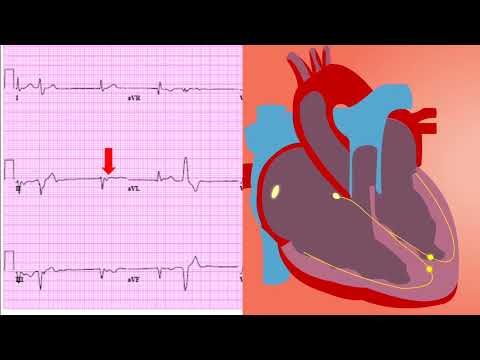🎬 Video Summary
This video provides a comprehensive comparison of Atrial Fibrillation (aFib) and Atrial Flutter (aFlutter), focusing on their pathophysiology and key differences in ECG presentation. Learn to distinguish between these two common arrhythmias and improve your ECG interpretation skills. Understand the nuances of aFib vs aFlutter for accurate diagnosis and effective patient management.
🧠Teaching Pearls
- 💡 Atrial fibrillation (aFib) is characterized by chaotic and irregular atrial activity, leading to an irregularly irregular ventricular response.
- 💡 Atrial flutter (aFlutter) typically presents with a characteristic “sawtooth” pattern on the ECG, indicating organized atrial activity.
- 💡 Differentiating aFib from aFlutter relies heavily on careful ECG analysis, paying attention to the presence and regularity of atrial waves.
- 💡 Understanding the underlying pathophysiology of both arrhythmias is crucial for appropriate treatment selection.
- 💡 ECG characteristics are vital for quick identification and management.
❓ Frequently Asked Questions
Q: What are the main ECG differences between Atrial Fibrillation and Atrial Flutter?
A: Atrial fibrillation shows an irregularly irregular rhythm with no discernible P waves, replaced by fibrillatory waves. Atrial flutter often displays a regular atrial rhythm with a sawtooth pattern, representing the flutter waves.
Q: How does the treatment differ for Atrial Fibrillation versus Atrial Flutter?
A: While both conditions may require rate or rhythm control, atrial flutter is often amenable to catheter ablation, whereas atrial fibrillation management is more complex and may involve multiple approaches.
Q: What is the significance of the “sawtooth” pattern in Atrial Flutter?
A: The “sawtooth” pattern represents the rapid, regular atrial depolarization waves characteristic of atrial flutter, usually best seen in the inferior leads (II, III, aVF).
Q: Can Atrial Fibrillation and Atrial Flutter occur together in the same patient?
A: Yes, it’s possible for a patient to experience both atrial fibrillation and atrial flutter, either concurrently or at different times.
Q: What are the risk factors associated with Atrial Fibrillation and Atrial Flutter?
A: Common risk factors include hypertension, heart failure, coronary artery disease, valvular heart disease, and hyperthyroidism.
Q: Why is it important to differentiate between Atrial Fibrillation and Atrial Flutter?
A: Accurate diagnosis is crucial because the management strategies, including the potential for curative ablation, differ significantly between the two arrhythmias.
🧠 Key Takeaways
- 💡 Identify the key ECG characteristics of atrial fibrillation, including the absence of distinct P waves and irregularly irregular rhythm.
- 💡 Recognize the “sawtooth” pattern on the ECG that is indicative of atrial flutter.
- 💡 Understand the basic pathophysiological mechanisms underlying both atrial fibrillation and atrial flutter.
- 💡 Differentiate treatment options for each arrhythmia.
- 💡 Recognize the importance of prompt diagnosis and management of aFib and aFlutter to minimize complications.
🔍 SEO Keywords
Atrial Fibrillation, Atrial Flutter, aFib, aFlutter, ECG Interpretation, Arrhythmia, Cardiac Arrhythmia, ECG Diagnosis, Sawtooth Pattern, Irregularly Irregular Rhythm
“`

